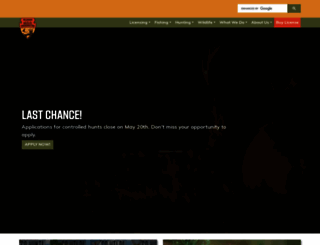Oklahoma Department of Wildlife Conservation | Oklahoma Department of Wildlife Conservation
Page Load Speed
1.6 sec in total
First Response
222 ms
Resources Loaded
1.1 sec
Page Rendered
253 ms

About Website
Click here to check amazing Wildlife Department content for United States. Otherwise, check out these important facts you probably never knew about wildlifedepartment.com
Homepage for the Oklahoma Department of Wildlife Conservation. Purchase your hunting or fishing license. Explore Outdoor Oklahoma and more.
Visit wildlifedepartment.comKey Findings
We analyzed Wildlifedepartment.com page load time and found that the first response time was 222 ms and then it took 1.4 sec to load all DOM resources and completely render a web page. This is quite a good result, as only 25% of websites can load faster.